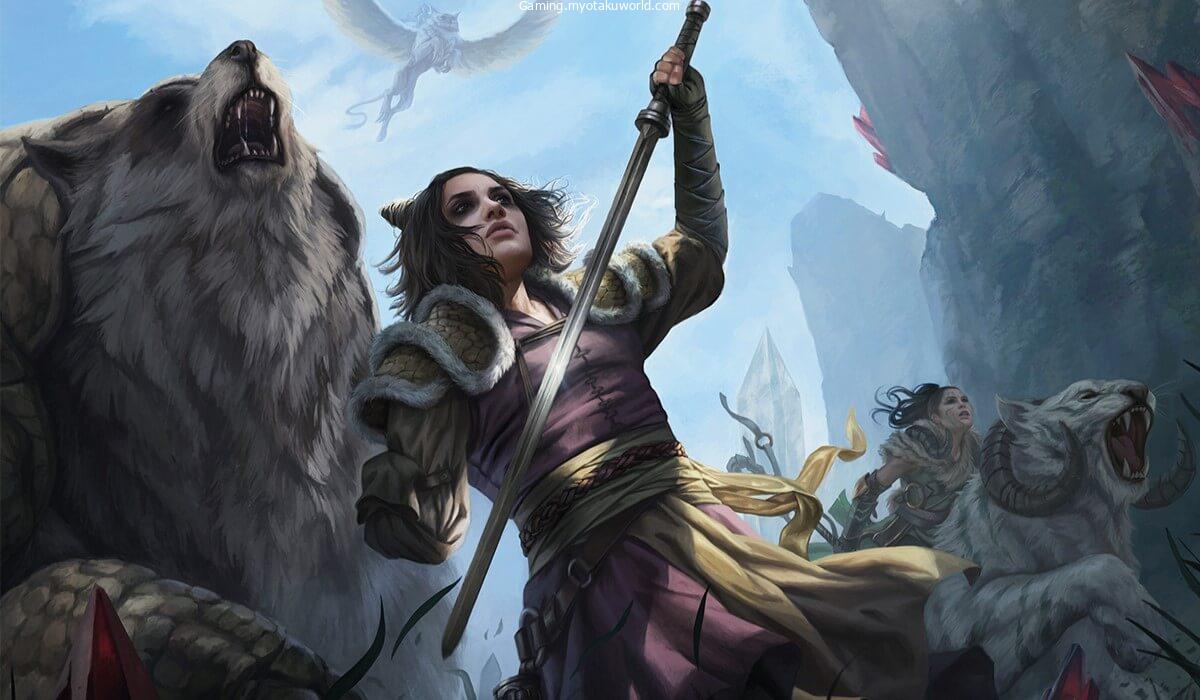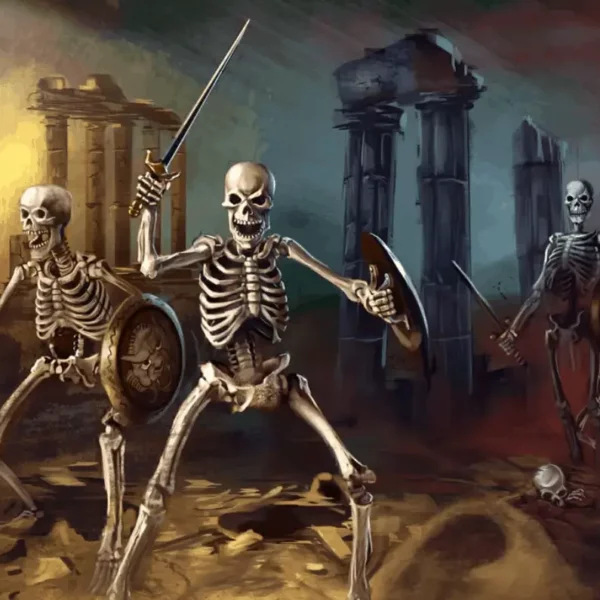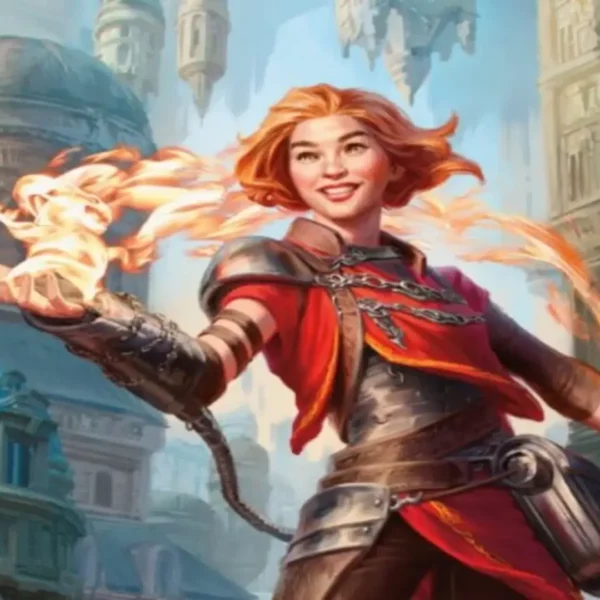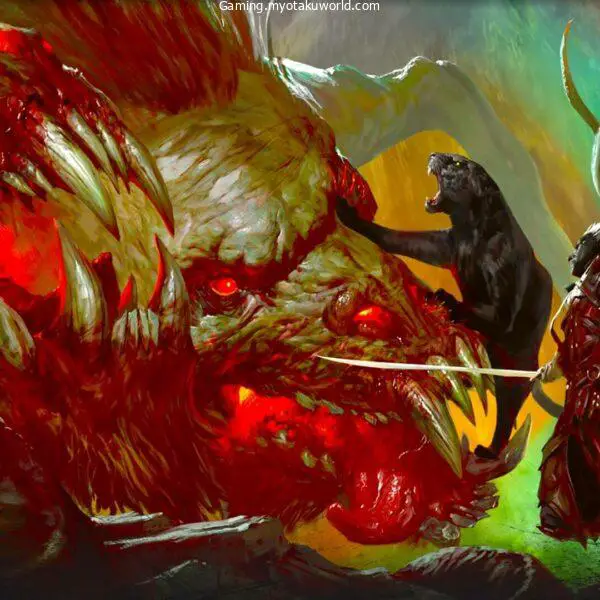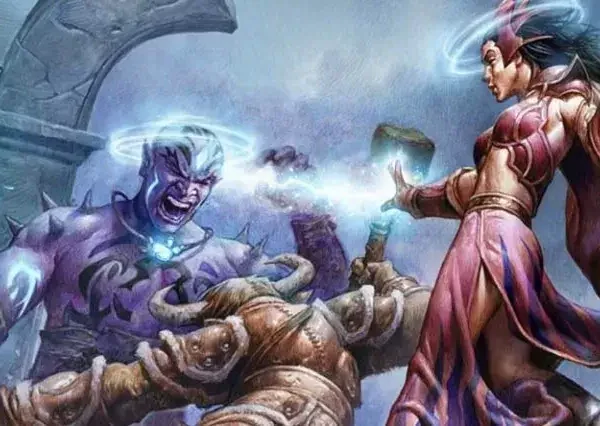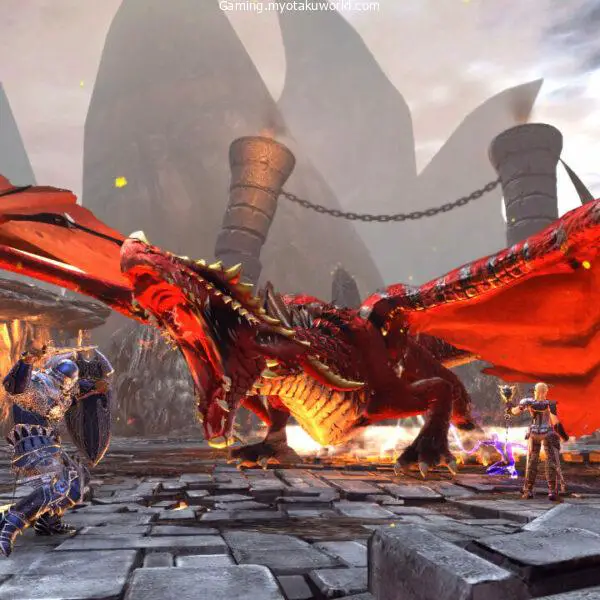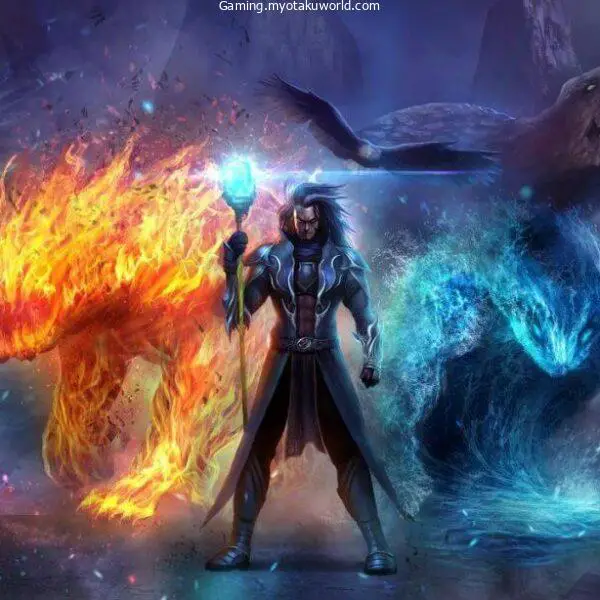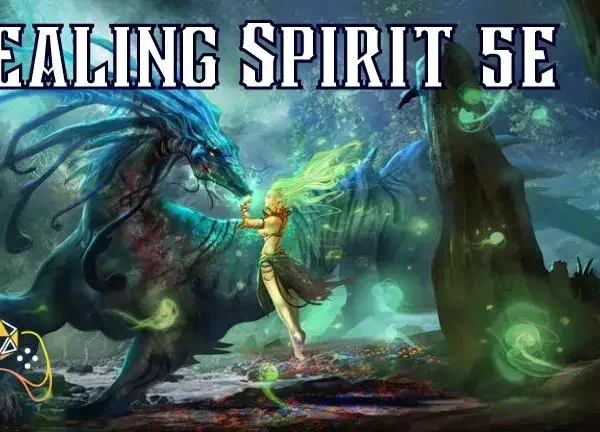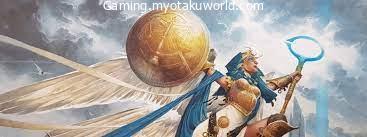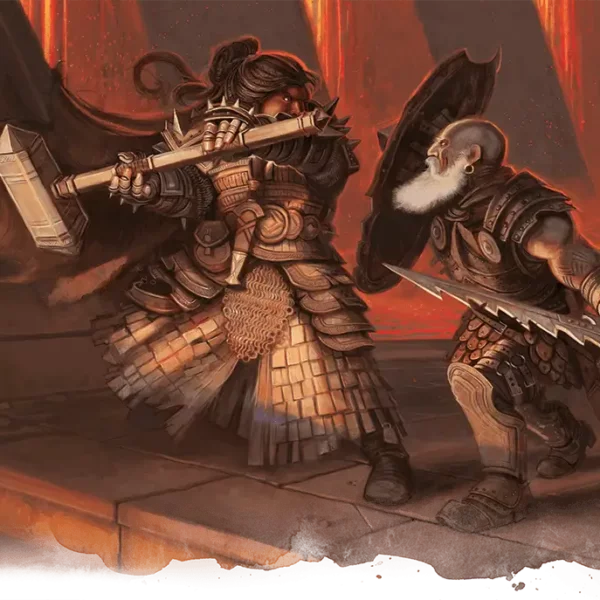In Dungeons & Dragons and other tabletop roleplaying games, it’s easy to forget about the less magical creatures like beasts.
Beasts, on the other hand, are just as easy to explain because, well, they are real. But it’s hard to make the animals we all know work in D&D 5e.
How do animals fit into D&D 5e? How are they used in a game? What is the number?
This whole article is about 5e beasts. I’ll explain what they are and how to use them in your D&D game.
Let’s begin by talking about what beasts are in D&D 5e.
What Are Beasts in 5e?
In D&D 5e, “Beast” is one of the 14 types of creatures. It is made up of animals and other creatures that don’t look like humans or monsters.
From the Monster Manual, page 6:
“Beasts are nonhumanoid creatures that are a natural part of the fantasy ecology. Some of them have magical powers, but most are unintelligent and lack any society or language. Beasts include all varieties of ordinary animals, dinosaurs, and giant versions of animals.”
Beasts in 5e are mostly animals and other natural things like bugs.
Wolves, deer, goats, spiders, cats, etc. All of these things are beasts in D&D 5e.
That’s all there is to it. Some beasts in 5e, like the Nyxborn Lynx, have strange skills. But most of the time, they are just ordinary animals.
Unless they are really big. There are a lot of big animals. They’re just like regular animals, but bigger. That’s about it.
If a creature looks like an animal but has a magical ability, that usually puts it in the monstrosity creature type.
Because of this, beasts have many different looks and skills. Some can fly or swim fast, some can see in the dark, and many other features are different from real animals.
Using Beasts in Your Game
You can use beasts in your D&D 5e game in several ways. I like to use them as allies, simple enemies, bad guys, or signs.
The last one is a little strange. But, it’s possible.
Most of the time, you’ll use the first two because beasts tend to be weaker than other creatures.
One thing to keep in mind about running beasts in battle is that they rarely fight to the death. If it’s clear that their opponent is stronger, they’ll try to run away.
Animals only fight to the death when they are very hungry when they need to protect their young, or when they have been trained to do so.
For example, a starving tiger might fight until it dies because it needs to kill for food so badly. Or, a brown bear mother fights off an enemy because her cubs are close by.
So, let’s go over each of these ways to use beasts, starting with using them as companions.
5e Beasts as Companions
The first way to use beasts in 5e is as party members or non-player characters.
Horses and oxen have a place in the world as working animals. But hunting dogs or trained falcons can travel with the party or NPCs.
You, as the DM, decide how a companion animal joins the party. You might have a player character pass a series of Wisdom (Animal Handling) Ability Checks or have a travelling merchant sell trained animals.
No matter how you do it, your party will either love or hate having an animal with them.
Now, if you have a Beast Master Ranger in your party, you’ll also have to deal with the mechanics of adding what amounts to a sidekick character.
If you want to play this Ranger Archetype, both you and the DM should have a list of eligible beasts on hand.
Tasha’s Cauldron of Everything makes things a little easier by giving the Primal Companion a feature that can be used instead of the Beast Master’s Ranger’s Companion feature.
It makes choosing from any beast with a CR of 1/4 or less easy by giving you three options that are already made: Beast of the Land, Beast of the Sea, and Beast of the Sky.
If you want the party to get a beast as a friend, I suggest you keep it simple. You might be tempted to give them something unusual, like a Giant Elk or something.
But then travelling and having adventures gets…hard.
If the DM and the party aren’t ready for a given situation, an animal companion can quickly become a burden.
Still, a party pet tends to bring the player characters closer together and make their bonds stronger.
5e Beasts as Enemies

The second way to use beasts in 5e, and probably the way they are used most often, is as encounters for adventuring.
Most of the time, this means a chance meeting while travelling or a quest for a low-level character. But they may also be more like meetings with people.
I like to use animals in battle in one of three ways:
- As low-level slaying quests
- As random encounters
- As ancillary enemies
Most of the time, low-level adventures are the only ones who fight monsters. A group of coyotes are bothering a poor farmer’s draught horse and an old barn cat. So, he asks for help getting rid of the coyotes.
Similar things.
You see, beasts aren’t usually very dangerous enemies. At least, not the more common animals.
So, once your player characters reach even level 4, they can take and deal so much damage that fighting monsters becomes easy.
The same is true for chance meetings. But the fun part is surprising your party when they aren’t looking for it.
Imagine that your group is walking through a dense tropical forest. Maybe a hungry tiger (or more than one) will find the group’s food. The tigers attack the sleeping party in the middle of the night.
Lastly, use beasts as extra enemies for creatures that are smarter than beasts.
I’d say you’re not a very good bandit if your camp doesn’t have at least two or three guard dogs.
The passive Perception scores of beasts in D&D 5e tend to be pretty good. This means that animals serve as early warning systems.
Most of the time, these animals are taught to fight until the end to protect their owners.
Some other kinds of creatures that use beasts are:
- Bandits using Mastiffs as guard dogs
- Goblins taming Giant Rats to protect their homes
- Kobolds keeping Giant Lizards as mounts
- Lizardfolk using Triceratops as beasts of burden
- Your villain putting Giant Crocodiles in their moat
Because they can do so many different things, beasts make great secondary enemies.
If your story lets you, you can still challenge them if you put a fairly experienced adventuring party against a less common beast like a Tyrannosaurus Rex.
5e Beasts as Villains
Now, how do you make a bad guy out of a beast?
I’m also not talking about the first few quests you go on. Yes, the wolves your party is sent out to kill at 1st level are technical “villains.” But they aren’t the bad guys.
So, how do you use monsters as bad guys in your D&D 5e game?
“Character Versus Nature” is one of the four conflicts in the story. Your characters aren’t up against a smart foe, but rather some part of nature. It is about staying alive.
This is hard to do in D&D because players usually want a villain they can focus on. Survival in this case means pretty much the same thing as travel: it’s usually boring and slows down the game.
Think about Jurassic Park.
The story did happen because of people. But the whole story is about how to stay alive when big lizards are around. If you put your party in a situation where they have to deal with dinosaurs, you could pretty easily go from 1st level to 8th level.
The main bad guys along the way are the beasts. You could add a few humans here and there. But the dinosaurs are the main focus and the main bad guys.
I’ll admit that this is still hard to do with other animals.
But, as always, I encourage you to use your beasts in weird ways.
It could be that a huge bear is a threat to the area. Or, a huge number of giant spiders come out from deep underground and run all over the kingdom. Or, the birds get more and more aggressive, gathering together and attacking anything else that moves.
No matter why you want beasts to be your main bad guys, I say you need to think outside the box.
5e Beasts as Omens
As omens are the last way you can use beasts in your 5e game.
Different animals have had meanings for as long as people have been around.
The crow is an easy way to show this. A crow or other corvid is often seen as a sign of death to come. Another one says that you’ll have bad luck if you meet a black cat.
If you want to be creative, give some of the beasts in your world different meanings.
What does it mean if you see one crow instead of a group of them? What will happen if you hear a wolf howl on a blue moon night? When you see an albino elk on the road, what does that mean?
When it comes to using beasts as symbols and omens in your setting, there are so many different ways to go about it.
You decide if these signs are true or not. In different parts of the world, the animals we see every day have different meanings. People do it all the time. So, why don’t the people in your D&D setting do the same?
As a DM, this also gives you some freedom.
Send your players an omen in the form of one of 5e’s many beasts if you want to steer them in a certain direction without telling them directly.
Make sure to plant any omens ahead of time or have a non-player character (NPC) on hand to explain what they mean to the party.
List of 5e Beasts By CR
In D&D, there are a lot of beasts. Most of them, though, have lower Challenge Ratings (CR).
Here are some lists of 5e monsters by their CR. Now, I only took creatures from D&D’s Basic Rules because they are easy to find and don’t cost anything.
Check out DnD Beyond’s monster list for a full list of all official 5e beasts.
CR 0 Beasts in 5e
- Baboon
- Badger
- Bat Bat
- Cat
- Crab
- Deer
- Eagle
- Frog
- The Giant Fire Beetle
- Goat
- Hawk
- Hyena
- Jackal
- Lizard
- Octopus
- Owl
- Quipper
- Rat
- Raven
- Scorpion
- Sea Horse
- Spider
- Vulture
- Weasel
CR 1/8 Beasts in 5e
- Blood Hawk
- Camel
- A Diseased Giant Rat
- Flying Snake
- Giant Crab
- Giant Rat
- Giant Weasel
- Mastiff
- Mule
- Poisonous Snake
- pony
- Storage
CR 1/4 Beasts in 5e
- Axe Beak
- Boar
- Constrictor Snake
- Draft Horse
- Elk
- Giant Badger
- Giant Bat
- Giant Centipede
- Giant Frog
- Giant Lizard
- Giant Owl
- A Giant Poisonous Snake
- A Giant Wolf Spider
- Panther
- Pteradon
- Riding Horse
- A Swarm of Bats
- A Swarm of Rats
- A Swarm of Ravens
- Wolf
CR 1/2 Beasts in 5e
- Ape
- Black Bear
- Crocodile
- Giant Goat
- A Giant Sea Horse
- A Giant Wasp
- Reef Shark
- A Swarm of Insects
- Warhorse
CR 1 Beasts in 5e
- Brown Bear
- Dire Wolf
- Giant Eagle
- Giant Hyena
- Giant Octopus
- Giant Spider
- Giant Toad
- Giant Vulture
- Lion
- Nyxborn Lynx
- A Swarm of Quippers
- Tiger
CR 2 Beasts in 5e
- Allosaurus
- Giant Boar
- The Giant Constrictor Snake
- Giant Elk
- Hunter Shark
- Plesiosaurus
- Polar Bear
- Rhinoceros
- Saber-toothed Tiger
- A Swarm of Poisonous Snakes
CR 3 Beasts in 5e
- Ankylosaurus
- Giant Scorpion
- Killer Whale
CR 4 Beasts in 5e
- Elephant
CR 5 Beasts in 5e
- Giant Crocodile
- Giant Shark
- Triceratops
CR 6 Beasts in 5e
- Mammoth
CR 7 Beasts in 5e
- Giant Ape
CR 8 Beasts in 5e
- Tyrannosaurus Rex
FAQs
What is the Highest CR Beast in 5e?
With a CR of 8, the Tyrannosaurus Rex is the most dangerous beast in 5e.
What is the Largest Beast in D&D?
The Brontosaurus from Volo’s Guide to Monsters and the Sperm Whale from Icewind Dale: Rime of the Frostmaiden are the two biggest monsters in D&D. Both of these creatures are as big as a Gargantuan.
Do Dragons Count as Beasts in 5e?
No. In 5e, dragons are not animals. Instead, they use creatures of the dragon type.
Summary
That’s it for 5e beasts.
They are mostly wild animals like fish, birds, mammals, insects, lizards, and more. Unfortunately, this means they can’t keep up with the more magical creatures in D&D, so they can only go on low-level adventures where they fight.
Still, if you’re creative, you can make adventures and plots in your game that are all about certain beasts.
Give a monster in your setting a level in a player class. This is the last thing I’ve been thinking about and want to share with you.
This is related to how you can change the creatures for your game. But no one says a bear can’t have a level in Barbarian.
Give it three levels of damage resistance with the Path of the Totem Warrior. That person is a low-level bad guy. A bear that is very difficult to kill.
